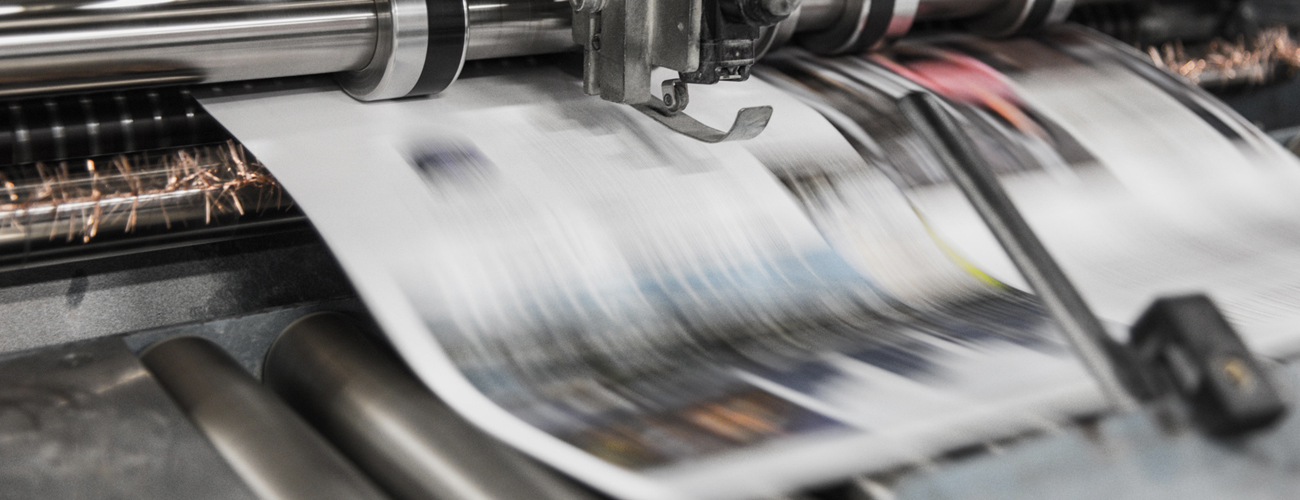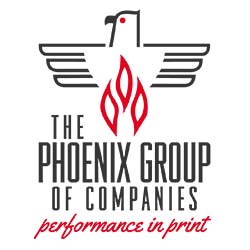What Is the Difference Between Offset & Digital Printing?

When you’ve decided to get something printed like marketing materials, signage, or business cards, you know how important copy, layout, design, and graphics are. There’s a lot of work that goes into each individual component. Once the time comes to send it off to the printer, you want the finished product to look its best. Before you embark on printing your project, an important decision you’ll need to make with your print provider is whether you want to print offset or digitally.
Let’s review the difference between offset and digital printing along with the pros and cons of each, so you can decide which is the best printing method for your next project.
What is Offset Printing?
Offset printing technology involves printing on a press with ink. Printing in this format is typically done using aluminum-based plates that are attached to a roller called a plate cylinder. Plate cylinders are used to transfer images and text onto a rubber sheet (or blanket) which rolls the ink and transfers text and designs onto paper, vinyl, or another printing material. This is the most common technique for printing brochure, catalogs, postcards, magazines and other promotional literature.
Printing offset has a longer turnaround time than digital printing as it involves more setup time, and the finished product must be completely dry before it can be finished. However, this type of printing is widely known to achieve the best quality on a large variety of papers. It also provides the most control over color. Offset printing has more steps and greater start up cost than digital but the running cost per piece is often less than digital.
Typically, for offset printing projects, four colors are used. They are Cyan, Magenta, Yellow, and Key (Black). These colors comprise CMYK, and when combined, can create any color needed for even the most complex designs. CMYK is the printing equivalent of RBG (Red, Green, and Blue) that’s used to create digital images.
The Pros & Cons of Offset Printing
Pros:
- High print quality: Offset printing enables high-quality finished products on a wide variety of substrates
- Cost-effective for large runs: If your project requires a large run, offset printing is a more cost-effective option than digital printing.
Cons:
- Larger up-front investment: Producing printing plates required for this printing method can result in a higher up-front cost than you would expect with digital printing. Upon beginning production, though, the cost per sheet is usually significantly less .
- Longer turnaround time: Offset printing is more labor-intensive than its digital counterpart, meaning it can result in a longer turnaround time. However, once plates are made and colors are matched, this method can enable you to do more with your project faster than digital printing.
- Greater start up waste: It can take 50 to 1,000 initial sheets (which may be inconsistent),to start up the press and achieve acceptable color quality. These start up sheets are recycled but do add to the start up cost.
What is Digital Printing?
Digital printing, also known as inkjet printing or electronic printing, doesn’t use any plates. In lieu of plates, this method uses toner (similar to a laser printer you’d use at home or in an office setting) or liquid ink. Printing using the digital method means outputting directly from electronic files, as opposed to replicating a hard copy original. Electronic files like PDFs, for example, are uploaded directly to the printer, and the project begins to print. That’s all it takes.
Electronic printing excels for lower quantities and is best for runs under 2500 pieces. Although, other factors such as size of piece and substrate may impact the decision for digital versus offset printing.
Up until recent technology advancements in the past five years, digital/inkjet printing quality was inferior to offset printing. Presses like Fuji’s J Press have up ended the quality paradigm. This new generation of inkjet presses actually surpass conventional offset printing in quality reproduction, color gamut and consistency.
The Pros & Cons of Digital Printing
Pros:
- Quick turnaround time: Digital printing doesn’t require the same labor that offset printing does, reducing turnaround times and enabling projects to be completed faster.
- Cost-effective for small runs: For small projects, costs for digital or inkjet printing are far less than they would be using the offset method.
- Improved accuracy: The best in class Modern digital printing technology is constantly scanning, adjusting color match the orginal file. Even making adjsutments for subtle variations in the shade of the paper in the blink of an eye. Detectors also test inkjet heads on every sheet to ensure that the machine is running at its full capabilities and that there are no color or quality issues or other imperfections. With digital technology, it’s also easy to reproduce many PMS colors that can’t be accurately produced using CMYK offset printing
- Variable data capable: One of the biggest benefits of this printing method is that every piece can be unique. Imagine personalizing each piece with pictures and content relevant to each recipient . Let you imagination go wild!
- Less waste: Digital printing provides great accuracy for small runs because the very first piece is as perfect s the last one. No start up waste.
- Environmentally friendly: Inkjet printing is water-based, making it very environmentally friendly.
At the Phoenix Group, all inks are vegetable -based, so both digital and offset methods are environmentally friendly.
Cons:
- Lower quality: When printing digitally, images aren’t usually as crisp as those you can achieve with offset. Unless best in class ink jet presses (like Fugi J Press) are used.
- Higher cost for large runs: To print a large run digitally, the cost per sheet will be higher compared to printing offset because the paper and toner is much more expensive and digital press run slower than offset presses.
- Fewer material options: Offset printing lends itself to a wide variety of stocks and materials, whereas many digital presses have a narrower range of compatible paper options.
Digital versus Offset Printing: Which Is Best?
To decide which printing method is best for your project, it’s important to take into account two important factors: your desired quantity and timeframe. Once you’ve determined how many pieces your project requires and the timeframe within which it needs to be completed, you’ll want to consider the pros and cons of each printing method. Still not sure which method is best for your project? Don’t hesitate to reach out to your printer, as they will also be able to make recommendations on what method will work best for your project based on your needs.
If you’re interested in working with a print provider known for higher quality and trusted offset and digital capabilities, get in touch with the Phoenix Group to explore our services and see how we work.
If you’re looking for a printer who can print a small quantity of art museum quality catalogs using best in class digital printing or huge quantities of direct mail brochures on heatset offset web presses. Phoenix has the right technology and equipment to Rise Above your expectations. Get in touch with the Phoenix Group.
